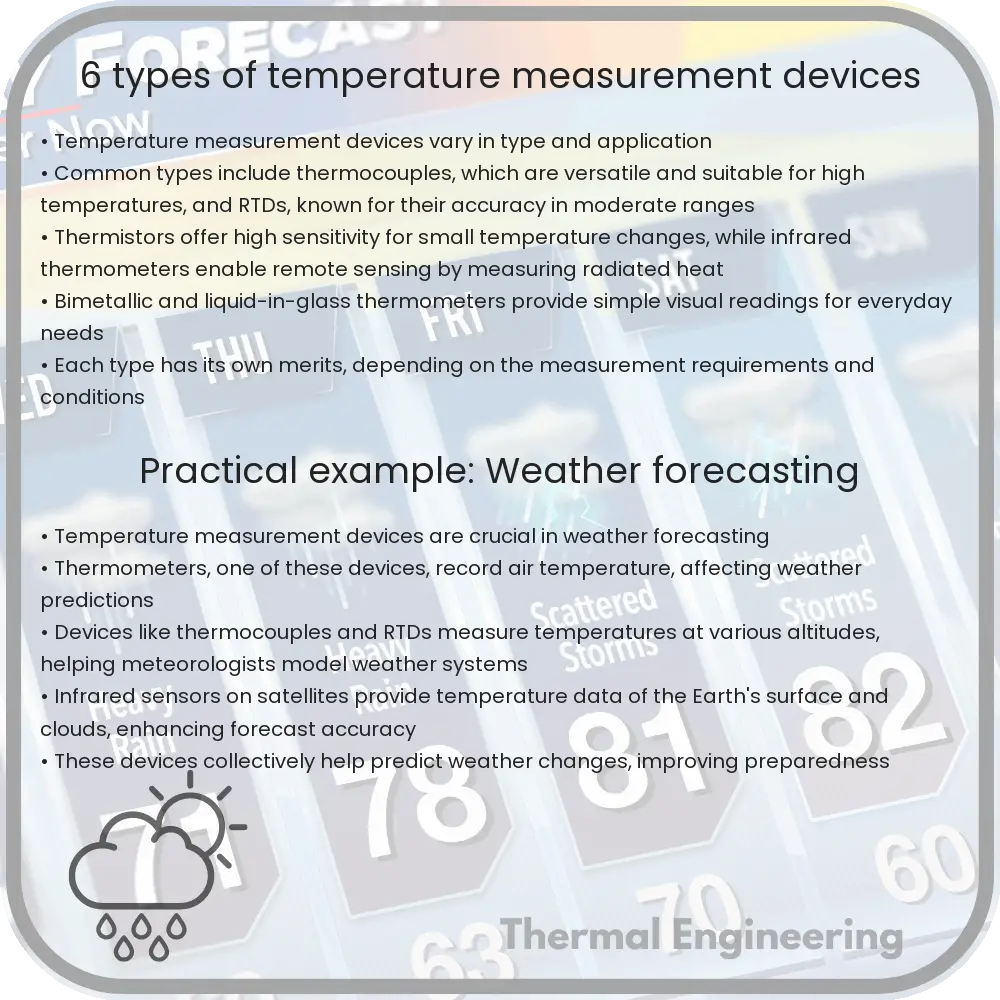Guide to common temperature measurement devices used in scientific and industrial applications.

Understanding Temperature Measurement Devices
Temperature measurement is crucial in numerous scientific and industrial processes. The accuracy of temperature data can significantly affect the performance and safety of equipment. Engineers utilize various types of temperature measurement devices, each suited to specific applications and ranges of temperature. Here’s a guide to six common types of these devices:
1. Thermocouples
Thermocouples are widely used because of their broad range, simplicity, and rapid response. They operate based on the Seebeck effect, where a voltage is generated at the junction of two different metals that varies with temperature. Thermocouples can measure temperatures from -200°C up to +2500°C. They are inexpensive but less accurate than some other types.
2. Resistance Temperature Detectors (RTDs)
RTDs are more precise than thermocouples and are used when measurement accuracy is critical. They function by measuring the change in electrical resistance of a metal, typically platinum, as its temperature changes. RTDs are suited for measurements between -270°C to +850°C. They often require a current to be passed through the element, making them slightly more complex to implement.
3. Thermistors
Thermistors are similar to RTDs, as they also measure temperature based on the resistance of a material. However, thermistors are made of ceramic or polymer materials rather than metals. They offer high sensitivity and accuracy over a smaller temperature range (about -100°C to +300°C) and are generally used in consumer electronics and environmental controls.
4. Infrared Thermometers
These devices measure the infrared radiation emitted by an object to determine its temperature, allowing for non-contact temperature assessment. Infrared thermometers are ideal for situations where the object being measured is moving, or contained in a vacuum or other hostile environment. They can vary widely in terms of accuracy and capability, depending on the specific design and application.
5. Bimetallic Thermometers
Bimetallic thermometers consist of two metals with different rates of expansion bonded together. As temperature changes, the bimetal strip bends due to the different expansion rates, and this mechanical movement translates to a temperature reading, typically displayed on a dial. These thermometers are durable and inexpensive but have slower response times and moderate accuracy.
6. Liquid-in-Glass Thermometers
These traditional thermometers use the expansion and contraction of a liquid (commonly mercury or alcohol) in a glass tube to measure temperature. The physical rise or fall of the liquid column is directly related to temperature changes. They are simple and do not require any power source, but are fragile and not suitable for all applications.
Conclusion
Choosing the right temperature measurement device is dependent on several factors including the temperature range, accuracy requirements, response time, and environmental conditions. Each device type has its strengths and ideal use cases, ensuring that engineers can select the most appropriate technology for their specific needs.